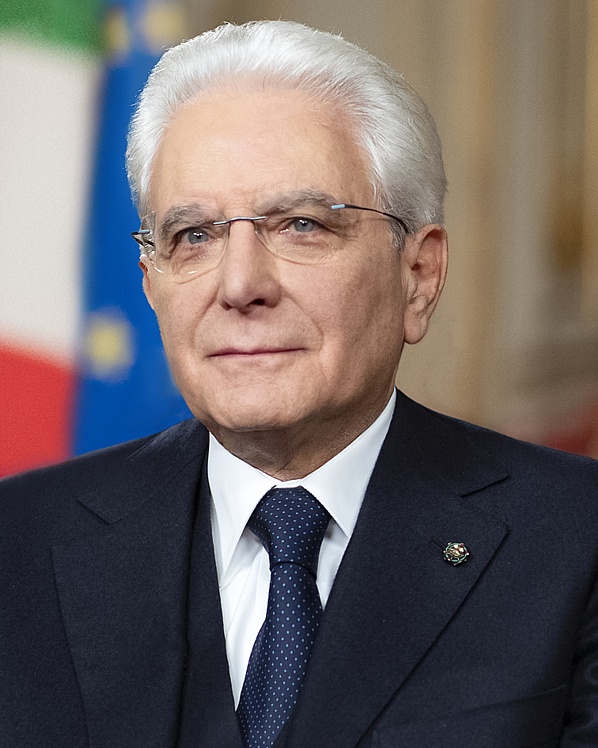|
Gelmini Reform
The Gelmini reform (Italian: ''riforma Gelmini'') refers to the set of acts of the Italian Republic – issued during the Berlusconi IV Cabinet – concerning the education sector in Italy. Entering into force during the Minister of Education, university and Research Mariastella Gelmini's term of office between 2008 and 2011, it profoundly altered the Moratti reform of 2003. General synopsis Some interventions, contained in some articles of Law 6 August 2008, n. 133, were followed by Law 30 October 2008, n. 169, whose main purpose was to reform the entire Italian school system. The compulsory education reform took place on 1 September 2009 for primary and lower secondary schools, and for higher secondary schools on 1 September 2010. Regarding universities, Law 240/2010, promulgated on 30 December of the same year, came into force on 1 January 2011. The acts Law 6 August 2008, n. 133 The Law-Decree 25 June 2008, n. 112 (''Disposizioni urgenti per lo sviluppo economico, la ... [...More Info...] [...Related Items...] OR: [Wikipedia] [Google] [Baidu] |
Ministero Dell'istruzione, Dell'università E Della Ricerca
The Ministry of Education, University and Research (in it, Ministero dell'Istruzione, dell'Università e della Ricerca, italic=no or MIUR) is the ministry of the Italian government for the national education system, the Italian universities and research agencies. The current Italian Minister of Public Education is Giuseppe Valditara and the Italian Minister of University and Research is Maria Cristina Messa. History In 1988, the ''Ministry of University and Research'' was split off from the '' Ministry of Public Education''. In the first Prodi cabinet the two were merged back into the ''Ministry of Education, University and Scientific and Technological Research'', then as the ''Ministry of Education, University and Research'' (MIUR) in the second and third Berlusconi cabinets. The two were re-separated in the second Prodi cabinet of 17 May 2006, but then re-merged in the fourth Berlusconi cabinet of 7 May 2008. In 2019 the ministry drafted a policy combining evaluation of gran ... [...More Info...] [...Related Items...] OR: [Wikipedia] [Google] [Baidu] |
Government Of Italy
The government of Italy is in the form of a democratic republic, and was established by a constitution in 1948. It consists of legislative, executive, and judicial subdivisions, as well as a Head of State, or President. The Italian Constitution is the result of the work of the Constituent Assembly, which was formed by the representatives of all the anti-fascist forces that contributed to the defeat of Nazi and Fascist forces during the Italian Civil War. Article 1 of the Italian constitution states: ''Italy is a democratic Republic founded on labour. Sovereignty belongs to the people and is exercised by the people in the forms and within the limits of the Constitution''. By stating that Italy is a democratic republic, the article solemnly declares the results of the constitutional referendum which took place on 2 June 1946. The State is not a hereditary property of the ruling monarch, but it is instead a '' Res Publica'', belonging to everyone. The people who are called to ... [...More Info...] [...Related Items...] OR: [Wikipedia] [Google] [Baidu] |
Higher Education In Italy
Higher education in Italy is mainly provided by a large and international network of public and state affiliated universities. State-run universities of Italy are under the supervision of Italian's Ministry of Education. There is also a number of private universities and state-run post-secondary educational centers providing a vocational instruction. Italian universities are among the oldest universities in the world. In particular the University of Bologna (founded in 1088, the oldest university in the world), the University of Padua, founded in 1222, and the University of Naples, founded in 1224, are among the most ancient state universities in Europe. Most universities in Italy are state-supported. 33 Italian universities were ranked among the world's top 500 in 2019, the third-largest number in Europe after the United Kingdom and Germany. The Bocconi University, Università Cattolica del Sacro Cuore, LUISS, Polytechnic University of Turin, Polytechnic University of Milan, S ... [...More Info...] [...Related Items...] OR: [Wikipedia] [Google] [Baidu] |
Corporate Governance
Corporate governance is defined, described or delineated in diverse ways, depending on the writer's purpose. Writers focused on a disciplinary interest or context (such as accounting, finance, law, or management) often adopt narrow definitions that appear purpose-specific. Writers concerned with regulatory policy in relation to corporate governance practices often use broader structural descriptions. A broad (meta) definition that encompasses many adopted definitions is "Corporate governance” describes the processes, structures, and mechanisms that influence the control and direction of corporations." This meta definition accommodates both the narrow definitions used in specific contexts and the broader descriptions that are often presented as authoritative. The latter include: the structural definition from the Cadbury Report, which identifies corporate governance as "the system by which companies are directed and controlled" (Cadbury 1992, p. 15); and the relational-structura ... [...More Info...] [...Related Items...] OR: [Wikipedia] [Google] [Baidu] |
Senato Della Repubblica
The Senate of the Republic ( it, Senato della Repubblica), or simply the Senate ( it, Senato), is the upper house of the bicameral Italian Parliament (the other being the Chamber of Deputies). The two houses together form a perfect bicameral system, meaning they perform identical functions, but do so separately. Pursuant to the Articles 57, 58, and 59 of the Italian Constitution, the Senate has 200 elective members, of which 196 are elected from Italian constituencies, and 4 from Italian citizens living abroad. Furthermore, there is a small number (currently 6) of senators for life (''senatori a vita''), either appointed or ''ex officio''. It was established in its current form on 8 May 1948, but previously existed during the Kingdom of Italy as ''Senato del Regno'' ( Senate of the Kingdom), itself a continuation of the ''Senato Subalpino'' (Subalpine Senate) of Sardinia established on 8 May 1848. Members of the Senate are styled ''Senator'' or ''The Honourable Senator'' (Italian ... [...More Info...] [...Related Items...] OR: [Wikipedia] [Google] [Baidu] |
Senate Of The Republic (Italy)
The Senate of the Republic ( it, Senato della Repubblica), or simply the Senate ( it, Senato), is the upper house of the bicameral Italian Parliament (the other being the Chamber of Deputies). The two houses together form a perfect bicameral system, meaning they perform identical functions, but do so separately. Pursuant to the Articles 57, 58, and 59 of the Italian Constitution, the Senate has 200 elective members, of which 196 are elected from Italian constituencies, and 4 from Italian citizens living abroad. Furthermore, there is a small number (currently 6) of senators for life (''senatori a vita''), either appointed or ''ex officio''. It was established in its current form on 8 May 1948, but previously existed during the Kingdom of Italy as ''Senato del Regno'' ( Senate of the Kingdom), itself a continuation of the ''Senato Subalpino'' ( Subalpine Senate) of Sardinia established on 8 May 1848. Members of the Senate are styled '' Senator'' or ''The Honourable Senator'' (Ital ... [...More Info...] [...Related Items...] OR: [Wikipedia] [Google] [Baidu] |
Gazzetta Ufficiale
The ''Gazzetta Ufficiale della Repubblica Italiana'' (Italian, ) is the official journal of record of the Italian government. It is published by the Istituto Poligrafico e Zecca dello Stato in Rome. Function The ''Gazzetta Ufficiale'' promulgates acts of the Italian Parliament (comprising the Senate of the Republic and Chamber of Deputies) and Decrees of the President of the Republic. On publication, legislation begins a brief period (usually 15 days) known as ''vacatio legis'', allowing for it to become widely known before taking legal effect. Part I comprises the General Series, published every weekday, together with the following special editions: Part II, containing all other notices, is published on Tuesdays, Thursdays and Saturdays. The 5th Special Series has been published since 3 January 2007, bringing together listings published, until 31 December 2006, in Part II under Announcements and Auction Notices. The ''Gazzetta Ufficiale'' was formerly available for free on ... [...More Info...] [...Related Items...] OR: [Wikipedia] [Google] [Baidu] |
Normattiva
Normattiva is an Italian government website published on 19 March 2010. It contains the rules of Italian law beginning in 1861. Institution The Normattiva was created by two laws: * * These were issued to create a free service for the review of all Italian legislation. History The site has been updated over the years. It progressively addressed earlier legislation. * 19 March 2010, publication of the website * 8 May 2010, legislation available since 1970 * 22 June 2010, legislation available since 1960 * 28 September 2010, legislation available since 1946 * 5 December 2013, legislation available since 1944 * 21 February 2014, legislation available since 1942 * 3 July 2014, legislation available since 1940 * 18 July 2014, list of the main codes In communications and information processing, code is a system of rules to convert information—such as a letter, word, sound, image, or gesture—into another form, sometimes shortened or secret, for communication through ... [...More Info...] [...Related Items...] OR: [Wikipedia] [Google] [Baidu] |
Primary Education
Primary education or elementary education is typically the first stage of formal education, coming after preschool/kindergarten and before secondary school. Primary education takes place in ''primary schools'', ''elementary schools'', or first schools and middle schools, depending on the location. The International Standard Classification of Education considers primary education as a single-phase where programmes are typically designed to provide fundamental reading, writing, and mathematics skills and establish a solid foundation for learning. This is ISCED Level 1: Primary education or first stage of basic education.Annex III in the ISCED 2011 English.pdf Navigate to International Standard Classification of Education (ISCED) Definition The ISCED definition in 1997 po ...[...More Info...] [...Related Items...] OR: [Wikipedia] [Google] [Baidu] |
Public Education
State schools (in England, Wales, Australia and New Zealand) or public schools (Scottish English and North American English) are generally primary or secondary schools that educate all students without charge. They are funded in whole or in part by taxation. State funded schools exist in virtually every country of the world, though there are significant variations in their structure and educational programmes. State education generally encompasses primary and secondary education (4 years old to 18 years old). By country Africa South Africa In South Africa, a state school or government school refers to a school that is state-controlled. These are officially called public schools according to the South African Schools Act of 1996, but it is a term that is not used colloquially. The Act recognised two categories of schools: public and independent. Independent schools include all private schools and schools that are privately governed. Independent schools with low tui ... [...More Info...] [...Related Items...] OR: [Wikipedia] [Google] [Baidu] |






